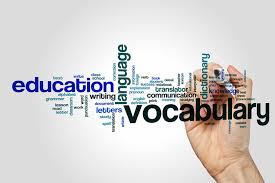 As a classroom teacher, I noticed that although my students were improving academically there was one area where even my top students were struggling; that area was vocabulary. My students were not scoring well. When I noticed that, knew there was something that I needed to do. That is when I began to research ways to improve my student’s vocabulary scores which meant that I needed to improve the way that I taught vocabulary. I started to be more intentional when planning vocabulary instruction and focused on it every day as a routine. The scores improved a little and students even retained and transferred the meaning of some of the words they learned. They still were not using the words in their own writing and speaking but that was another goal. I found that reading aloud books — books that caught my attention, mostly narratives— gave me a way to introduce words to the students that they otherwise would never hear. “Read-aloud expose children to a multitude of new words.” (McKenzie, 2014) I would talk about the words before I read the book and sometimes while I was reading. I did this, it worked the students loved it and would want to read the books that I had read to them again and again, and again. When I became an instructional specialist I remembered how my students loved to hear me read and found that using the read-aloud was a good way to teach a mini lesson to any child. That was when I decided to research how many different skills I could teach using it. I realized that I was on the right track when using the read-aloud to help with vocabulary instruction and that there was a way to introduce phonemic awareness, phonics, comprehension, and fluency. I can take those mini lessons and extend them into an activity or a simple anchor chart to help student remember the skills induced with the story I have read to them. I am pursuing my doctorate and for the purposes of my research topic I am going back to my first love, vocabulary instruction. “Vocabulary development is one of the top areas of focus for a child to learn to read and a central goal for primary grade students.” (McKenzie, 2014) I am now researching ways to implement explicit vocabulary instruction with the use of the read-aloud as a tool along with graphic organizer, anchor charts, and other ways to help students develop knowledge of words. “Vocabulary development is dependent on vocabulary knowledge.” (McKenzie, 2014) I believe that this will build word consciousness in students and that students will learn to read, write, and speak the vocabulary words they have learned. Thank you for reading. Feel free to leave a comment. McKenzie, Ellen. "Vocabulary Development Using Visual Displays: Visual Displays Can support Vocabulary Development In Unique And Creative Ways.". Dimensions of Early Childhood Vol 42.No 2 (2014): 12-17. Print.
0 Comments
Leave a Reply. |
AuthorPearl Garden, Ed.D has completed her dissertation research involving understanding the vocabulary instruction practices of early grade teachers. She has a passion for the new and novice educator, and it is her goal to help educators tackle the achievement gap with her research findings. She will use this blog to share what she has learned in “pearls of literacy”. The ideas come from her dissertation titled “A Content Analysis of the Vocabulary Instruction Habits by Early Grade Teachers”. Archives
May 2024
Categories |
 RSS Feed
RSS Feed